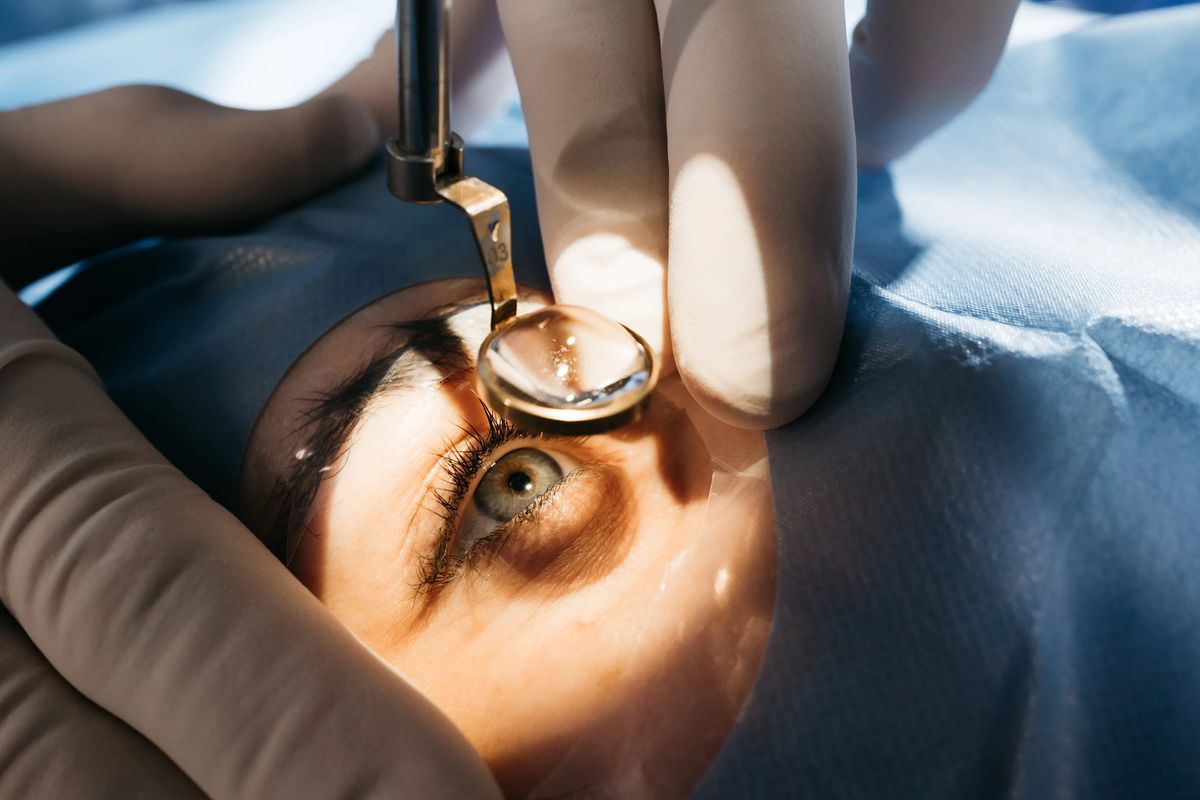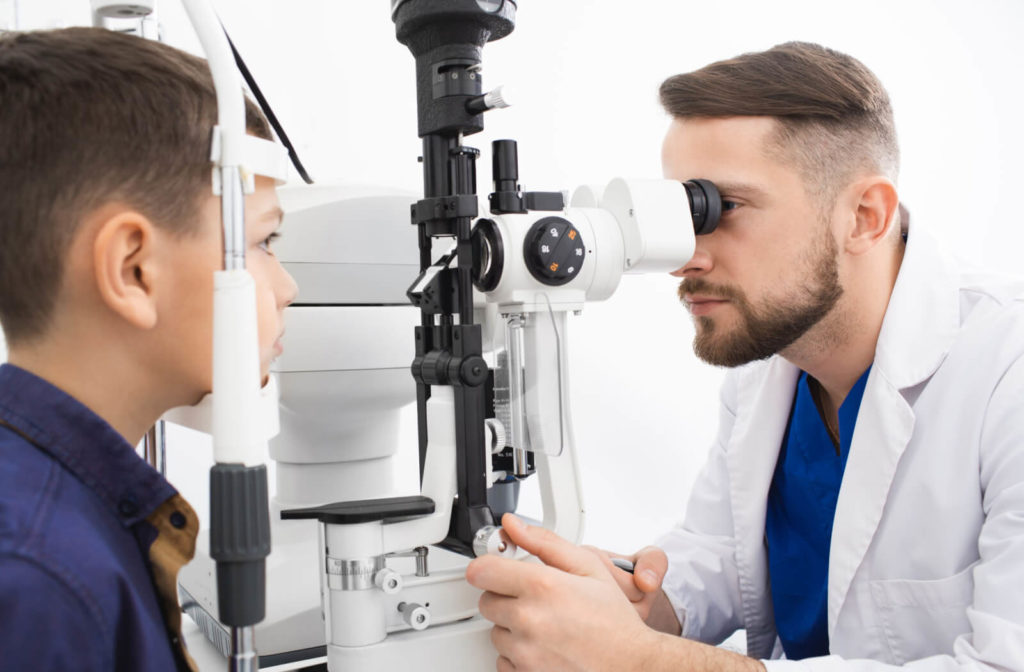Alarming Reality of Refractive Errors in Schoolchildren

The habit of looking at screens too closely and for too long causes eye strain and increases the risk of myopia in children.
According to statistics from the Vietnam Ophthalmology Council (2024), around 5 million children—accounting for 30–40% of school-age students—are affected by refractive errors such as nearsightedness, farsightedness, and astigmatism, with myopia being the most common. In major cities like Hanoi and Ho Chi Minh City, this rate exceeds 50%, mainly due to poor study habits, improper lighting, and excessive screen exposure.
School myopia not only affects academic performance but also has long-term impacts on visual health, causing eye strain, headaches, and even increasing the risk of retinal degeneration or amblyopia if not detected and managed early.
Bad Habits That Cause Early Myopia in Children
Experts emphasize that school-related refractive errors are not only genetic but are largely the result of improper daily habits and lifestyles. Below are the most common habits leading to early-onset myopia:
- Incorrect sitting posture: leaning too close to books, and using tables or chairs not suitable for height, forcing the eyes to focus continuously.
- Improper lighting: studying in dimly lit rooms or with direct light shining into the eyes.
- Prolonged screen time: children spend over 4–6 hours a day on phones, tablets, or TVs without adequate rest for their eyes.
- Reading on the bed or while moving: constantly changing focus distance causes eye fatigue and temporary blurred vision.
- Lack of outdoor activity: natural light helps control myopia progression, but many children spend most of their time indoors.
These habits, if maintained over time, can cause abnormal elongation of the eyeball, leading to progressive and difficult-to-control myopia.
Common Vision Problems in Children

Building healthy study habits with correct posture, proper lighting, and adequate rest helps keep children’s eyes bright and healthy.
Aside from myopia, children may also suffer from farsightedness, astigmatism, strabismus (crossed eyes), amblyopia (lazy eye), or nystagmus.
- Amblyopia (lazy eye): often the result of untreated myopia or strabismus, where one eye becomes weaker because the brain ignores images from that eye.
- Strabismus: occurs in about 2–4% of children (equivalent to 200,000–400,000 cases) and, if left untreated, can lead to permanent amblyopia.
- Nystagmus: although rare, it seriously affects visual ability and is usually related to congenital neurological issues.
Doctors advise parents to pay attention to early signs and children’s habits, such as frequent squinting, tilting the head when looking, reading too close, or complaining of tired eyes and poor night vision.
Consequences of Late Detection
If refractive errors are not detected early, a child’s vision will gradually deteriorate and become difficult to restore. Learning becomes more challenging, concentration decreases, and symptoms like eye fatigue and headaches appear more frequently, leading to reduced confidence in communication. Progressive myopia can cause the prescription to increase rapidly each year, sometimes exceeding -6.00D, raising the risk of retinal detachment, macular degeneration, or chronic amblyopia.
Some children wearing glasses with the wrong prescription also experience headaches, dizziness, and persistent blurred vision. Therefore, developing the habit of regular eye checkups and wearing correctly prescribed glasses is essential for long-term eye protection.
Solutions to Protect Children’s Eyes

Maintaining the habit of regular eye exams helps detect refractive errors early and protect children’s vision health.
a. Develop Proper Study Habits
- Maintain a minimum distance of 30–40 cm when reading, writing, or using screens.
- Sit upright and avoid bending too close to the desk.
- Use desks and chairs appropriate for the child’s height.
- Ensure lighting comes from the left side (for right-handed children) with brightness between 300–500 lux.
b. Limit Electronic Devices
- Children should not use phones or tablets for more than two hours a day.
- Apply the 20–20–20 rule: after 20 minutes of near work, rest the eyes for 20 seconds by looking at something 20 feet (6 meters) away.
c. Encourage Outdoor Activities
Children should spend at least two hours daily outdoors. Exposure to natural light allows the eyes to adjust flexibly and reduces the risk of myopia progression.
d. Nutrition for Healthy Eyes
Include foods rich in vitamins A, C, and E, lutein, and zeaxanthin such as carrots, broccoli, eggs, salmon, and fresh fruits. Limit sugary foods and fast food.
e. Regular Eye Exams
Children should have their eyes checked every 6–12 months at reputable eye clinics. Wearing properly prescribed glasses or receiving early medical intervention can prevent amblyopia and other long-term complications.
Advice for Parents
- Talk to your children and monitor their study habits daily.
- Create a bright, airy study space and limit electronic devices in the bedroom.
- Encourage children to play sports, read printed books, and participate in extracurricular activities.
- If your child shows abnormal visual signs, visit an eye specialist as soon as possible.
Visual health cannot be restored once lost. Prevention remains the smartest “investment” for a child’s eyes, helping them learn better and build a brighter future.

 vi
vi 15-Oct-2025
15-Oct-2025











 0916.741.763
0916.741.763 Appointment
Appointment